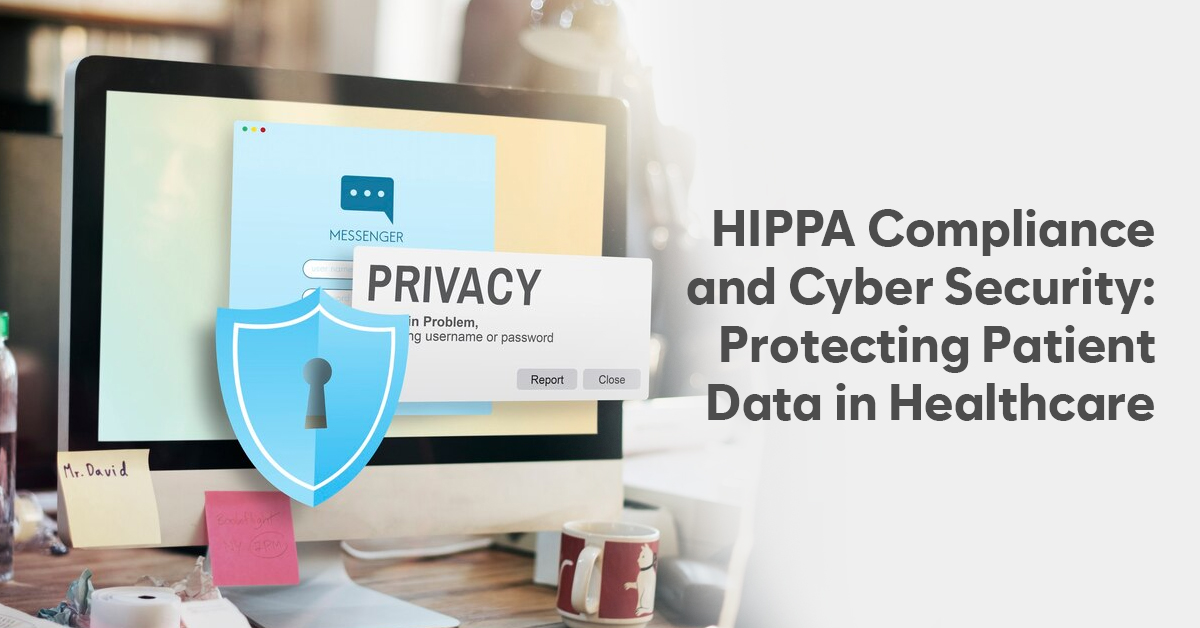As a hospital CEO, it is your top priority to ensure the well-being of your patients and the security of their personal health information. In an era where technology plays a critical role in healthcare, the intersection of HIPAA compliance and cybersecurity is more important than ever.
In this blog, we want to shed light on the significance of safeguarding patient data, the challenges healthcare organizations face, and the strategies to protect this sensitive information.
The Significance of Patient Data Security
Patient data, including medical records, treatment histories, and personally identifiable information (PII), is a treasure trove for malicious actors. This data is incredibly valuable on the black market, and a security breach can have far-reaching consequences for both patients and healthcare organizations.
First and foremost, patients have a fundamental right to privacy when it comes to their health information. The Health Insurance Portability and Accountability Act (HIPAA) protects these rights. Violating HIPAA regulations not only damages a patient’s trust in their healthcare provider but also carries significant legal and financial repercussions for the organization responsible.
From a financial perspective, data breaches can cost a healthcare organization millions of dollars. The costs associated with fines, legal fees, notifying affected patients, and potential lawsuits can be crippling. Furthermore, the damage to an organization’s reputation can be irreparable, as patients may choose to seek care elsewhere, impacting revenue.
Challenges in Healthcare Cybersecurity
Ensuring the security of patient data in healthcare is no simple task. It presents unique challenges that require ongoing vigilance and investment. Here are some of the key challenges we face:
Evolving Threat Landscape: Cyber threats are constantly evolving, becoming more sophisticated and adaptive. From ransomware attacks to phishing scams, cybercriminals employ a range of tactics to breach security systems.
Human Error: Healthcare employees can inadvertently expose patient data through simple mistakes. Clicking on a malicious link in an email, losing a portable device with patient information, or sharing login credentials are all examples of human error that can compromise security.
Legacy Systems: Many healthcare organizations still rely on outdated legacy systems that are not equipped to handle modern cybersecurity threats. Updating these systems can be costly and time-consuming.
BYOD (Bring Your Own Device): The trend of employees using personal devices for work purposes poses a significant risk. These devices may not have adequate cybersecurity measures in place, making it easier for hackers to gain access to sensitive information.
Insider Threats: While external threats are a considerable concern, healthcare organizations must also be vigilant about insider threats. Employees with malicious intent or those who inadvertently expose data can pose a substantial risk.
Strategies for Protecting Patient Data
Addressing these challenges requires a comprehensive approach to cybersecurity and HIPAA compliance. Here are some strategies to employ to protect patient data in your healthcare organization:
Risk Assessment: Regularly conduct risk assessments to identify vulnerabilities in your systems and processes. This helps understand where our weaknesses lie and take appropriate action to mitigate these risks.
Staff Training and Awareness: Educating your employees about the importance of data security and the role they play in protecting patient data is crucial. Regular training on recognizing phishing attempts, handling sensitive information, and following security protocols is a must.
Encryption: Encrypting data both at rest and in transit is a fundamental security measure. We ensure that all patient data is encrypted to prevent unauthorized access.
Access Control: Implement strict access controls to ensure that only authorized personnel have access to patient data. This includes user authentication, role-based access, and monitoring user activity.
Regular Software Updates: Keeping all software, including operating systems and applications, up to date with the latest cybersecurity patches is critical in safeguarding against vulnerabilities that hackers might exploit.
Recommended Read : Generative AI in Tech Landscapes
Incident Response Plan: A well-defined incident response plan in place can address any potential cybersecurity or HIPAA compliance breaches. This plan outlines the steps to be taken in the event of a security incident and the individuals responsible for each action.
BYOD Policies: To manage the risks associated with personal devices, implement a clear Bring Your Own Device (BYOD) policy. This policy must outline the cybersecurity requirements for devices used for work purposes.
Vendor Risk Management: Carefully assess the security practices of your third-party vendors, such as cloud service providers or software companies. Do this to ensure that they meet your data and cybersecurity standards.
Security Audits and Penetration Testing: Regular security audits and penetration testing can help evaluate the effectiveness of your security measures. Moreover, it can identify any potential weaknesses that need addressing.
Ongoing Compliance Monitoring: HIPAA compliance is not a one-time task; it is an ongoing commitment. Thus, continuously monitor your compliance status and update your policies and procedures as necessary.
Conclusion
Protecting patient data in healthcare is a serious responsibility. The intersection of HIPAA compliance and cybersecurity is where you can employ a multi-faceted approach to safeguard patient information.
The ever-evolving threat landscape and the increasing value of healthcare data on the black-market demands that you remain vigilant and proactive in your efforts. By prioritizing risk assessment, staff training, encryption, access control, and incident response planning, you are better equipped to defend against cybersecurity threats and maintain the trust of our patients.
In the face of these challenges, healthcare organizations must not only meet HIPAA compliance standards but also go above and beyond to secure patient data and maintain the integrity of the healthcare system. In doing so, you will be able to protect your patients and their sensitive data.




